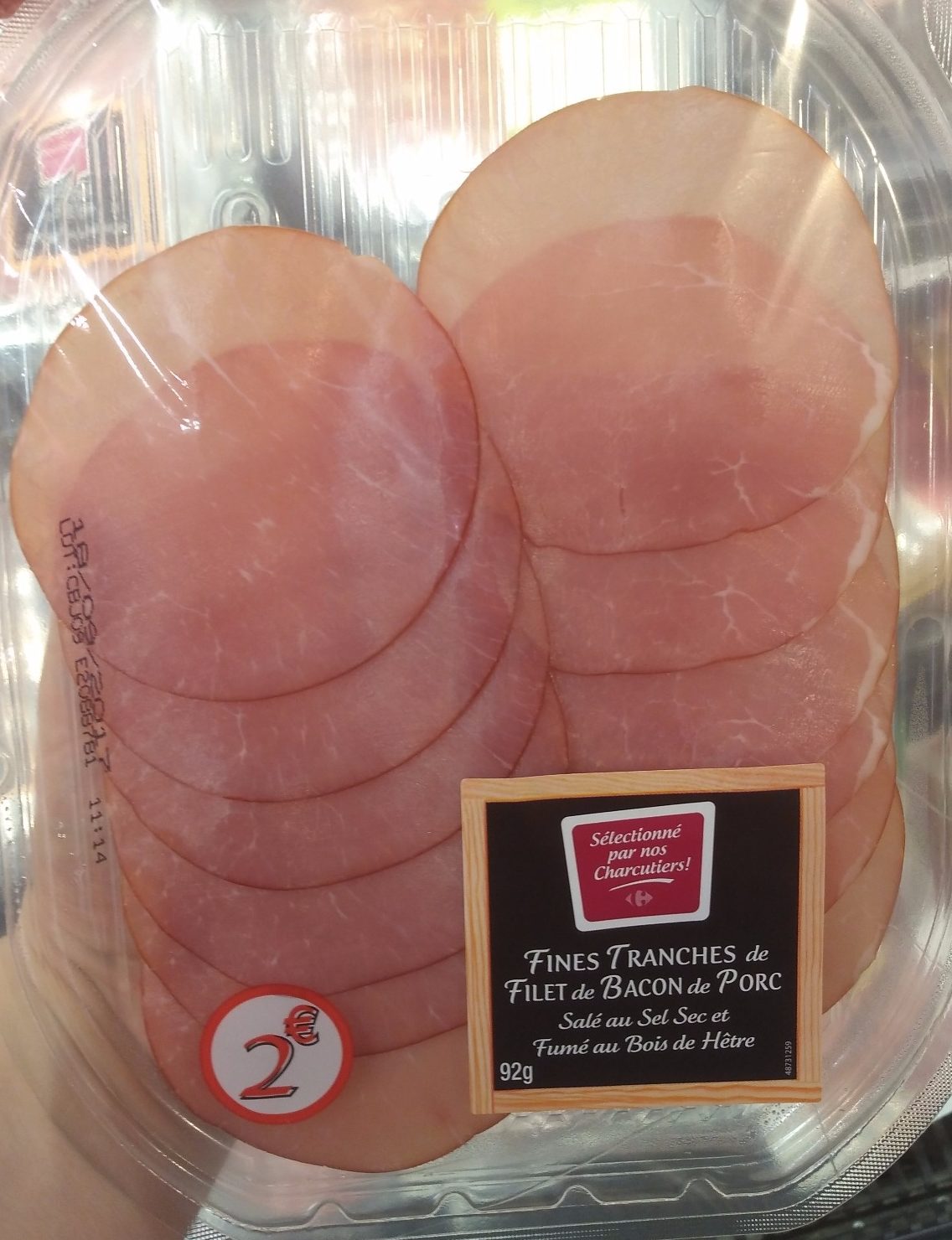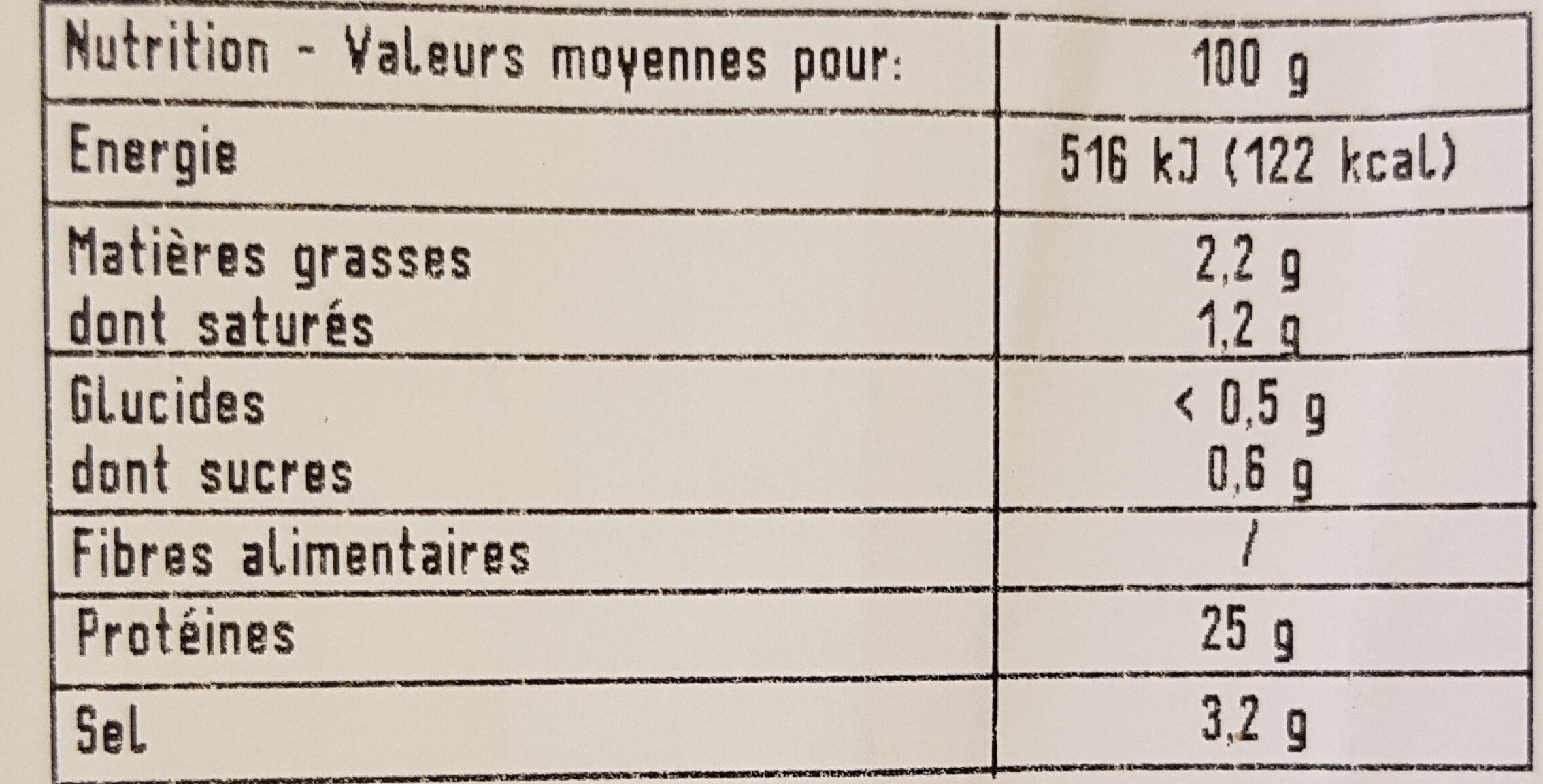Fines tranches de filet de bacon de porc fumé - Carrefour - 92 g
This product page is not complete. You can help to complete it by editing it and adding more data from the photos we have, or by taking more photos using the app for Android or iPhone/iPad. Thank you!
×
Barcode: 3560070690190 (EAN / EAN-13)
Common name: Filet de bacon fumé au bois de hêtre
Quantity: 92 g
Packaging: Plastic, Film, Fresh, Tray
Brands: Carrefour
Categories: Meats and their products, Meats, Pork and its products, Pork, Bacon, Smoked bacon, Sliced bacon
Labels, certifications, awards:
Green Dot, Made in France
Origin of ingredients: France
Manufacturing or processing places: France
Traceability code: EMB 57032A - Ars-sur-Moselle (Moselle, France), FR 57.032.001 CE - Ars-sur-Moselle (Moselle, France)
Stores: Carrefour
Countries where sold: France
Matching with your preferences
Environment
Packaging
Transportation
Report a problem
Data sources
Product added on by sebleouf
Last edit of product page on by packbot.
Product page also edited by date-limite-app, fgouget, keragui, kiliweb, openfoodfacts-contributors, quechoisir, quentinbrd, roboto-app.










